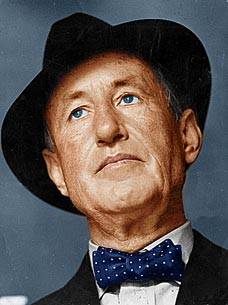
The recent coverage of the latest James Bond movie Spectre also saw much interest once again in Ian Fleming, the original creator of 007, including questions about where he might have gained the inspiration for some of the characters and themes that appeared in his stories?
Some major clues can perhaps be found in his research notes. Fleming, who was a working journalist as well as a novelist, took a keen interest in people, locations and ideas, and also went to great lengths to keep careful and precise notes about anything that caught his imagination. These jottings often became vital source material for his 007 novels and short stories.
A key source was a personal notebook kept by the Bond author and, back in 1992, this notebook came up for auction at Sotherby’s in central London. It was a potential mine of information for Bond aficionados.
The ‘James Bond File’ (as it was termed by Sotherby’s) was offered up for sale by Fleming’s stepdaughter Fionn Morgan on 15th December, 1992, and was sold for the then princely sum of £14,300.
The ‘File’ was in fact a 128-page loose-leaf notebook kept by Ian Fleming. During the 1950s and early 1960s – from Casino Royale in 1953 to You Only Live Twice and his death in 1964 – Fleming jotted and typed ideas for his characters and background detail, and many of these were put into the notebook. Although he was easily bored in social situations, Fleming still retained a journalist’s eye for detail and memorable moments, especially unusual character names.
The notebook contained a variety of ideas and useful information, and was very much a product of Fleming’s highly fertile mind and his acute powers of observation. There were two printed pages, for example, detailing the training tactics of real-life Soviet spies, probably torn from a military manual. Interestingly, there were also references to ‘Dr. No’, ‘M’, and ‘Pussy Galore’, together with some of Fleming’s private thoughts on women. A whole page was allocated to The Spy Who Loved Me (1962), Fleming’s experiment with writing a Bond story through the eyes of the heroine. The notebook also contained references to Thunderball and You Only Live Twice.
It was also clear that Fleming liked to experiment with phrases, lines and syntax. There were some interesting one-liners, including some very ‘Fleming-esque’ statements on gambling, such as: ‘The smell of a gambling man is smoke and sweat and fear’.
Significantly, Ian Fleming in his notes also reflected on the ageing process – something he clearly did not look forward to, and this became something of a continuous theme in the later James Bond novels, perhaps mirroring the Bond author’s dissatisfaction with his own declining health. As many Bond fans know, this is also something that Sam Mendes and Daniel Craig re-introduced to the James Bond character in a more indirect way in Skyfall.
Fleming’s notebook also showed how the Bond author was quite critical of top people in the British Establishment, commenting that they were not as important as they made themselves out to be. Many of his thoughts were arranged under sub-headings, such as ‘people’, ‘crime’, and ‘food’. The notebook evidently functioned as an invaluable personal guidebook when the Bond author produced his latest annual 007 story, a writing pattern that he stuck to throughout his career as a thriller writer.
The notebook was purchased at the 1992 auction by Fleming’s nephew and two nieces, Nicholas Fleming, Lucy Fleming and Kate Grimmond, the proceeds going to the London Library appeal. The next day, Lucy Fleming was interviewed on the BBC’s World Service radio station and explained why she thought it was ‘important’ to keep the notebook in the family. She emphasised that she felt that, although it was not what might be called ‘high’ literature, the notebook nevertheless still had literary value, and she reminded the interviewer that Ian Fleming was – after all – a best-selling author.
You Only Write Twice, Mr. Bond
On 16th December, 1992, the London Times newspaper (for which Fleming had worked when he was a journalist and also as a foreign news manager) devoted a section of its editorial to a humorous appreciation of Ian Fleming’s distinctive literary style, under the title You Only Write Twice. It was obviously inspired by the events at the auction.
This was a mini-007 story, in which James Bond was present himself at the Sotherby’s auction, and witnessed the sale of ‘Lot Number 296: Ian Fleming’s working notebook’!
Apparently ‘M’ had called Bond into his ‘drab’ office in the Secret Service’s office block near Regents Park earlier that day, and gravely announced: ‘Some lunatic is offering for sale at a vast price the notebook that records your early history and records of the Service…’. Was there intrigue afoot? Bond was ordered to sit in at the auction, but he quickly became bored and left. It was a nice touch.
Did You Know?
Ian Fleming sometimes really struggled to come up with suitably memorable and catchy titles for his stories. For his third James Bond novel, Moonraker (1955), the Bond author evidently considered various titles for his new 007 story. These included The Moonraker Secret, The Moonraker Plot, The Infernal Machine, The Inhuman Element, and Wide of the Mark.
